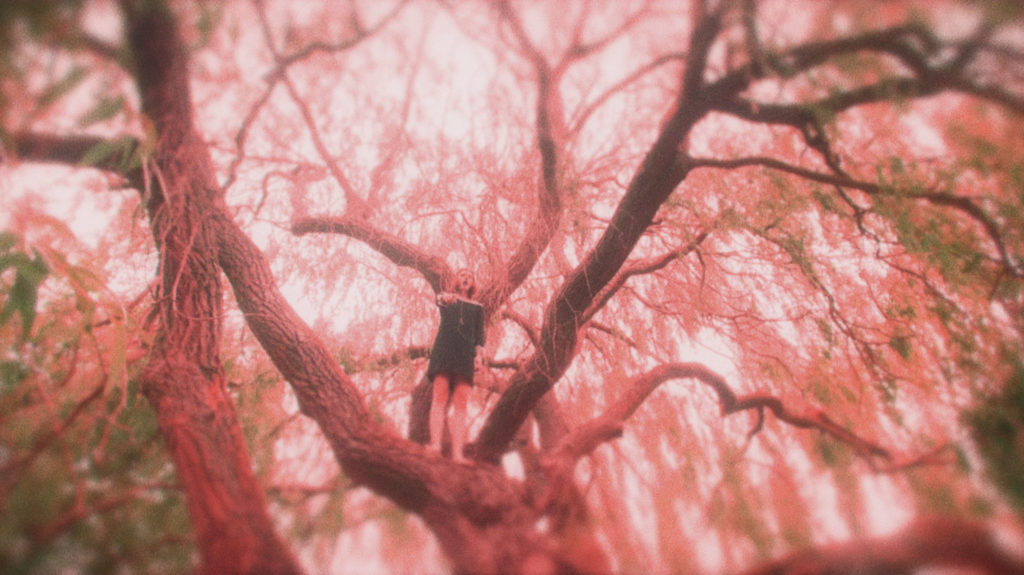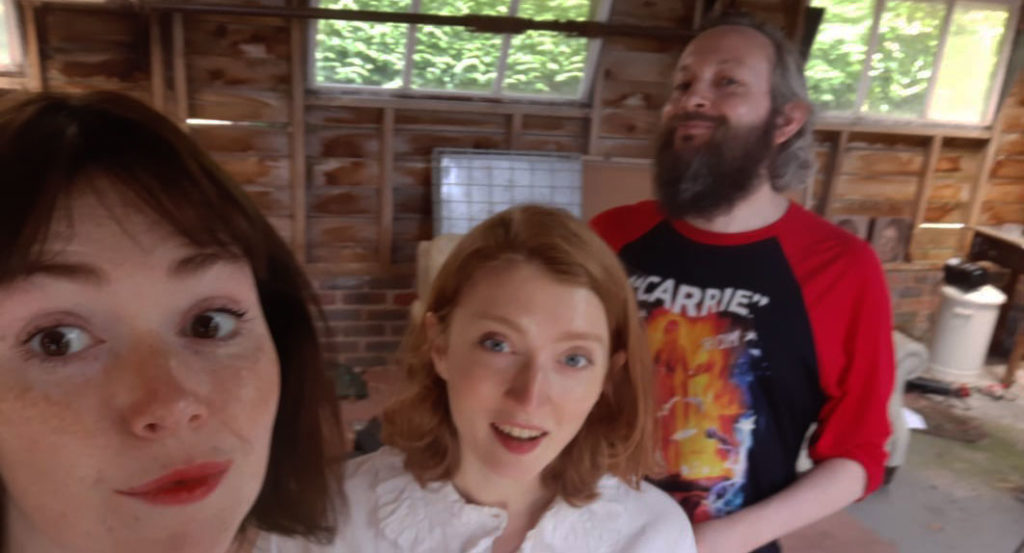
Back in 2018, we were lucky enough to talk with director Sam Ashurst about his debut feature, Frankenstein’s Creature. That film is a singular experience and left us excited for what Ashurst would deliver next.
We are happy to report then that his follow-up film, A Little More Flesh, does not disappoint. A dazzling black comedy whose laughs often freeze in the throat, it tackles issues around the abuse of women in the film industry, and skewers the once-tacitly approved view of directors’ unacceptable behaviour as simply being artists at work.
A film-within-a-film movie, A Little More Flesh unfolds as a director recording an audio commentary for his first feature, a once-banned slice of 70s porn entitled God’s Lonely Woman.
Ashurst voices the director, Stanley Durall, and shot the faux-sleaze flickand its “long thought lost” behind the scenes footage we see in the film. As God’s Lonely Woman plays out, we realise the terrible lengths to which he and male members of the cast and crew went to achieve his “erotic drama that didn’t compromise on emotion”.
Particularly regarding the treatment of his female leads Isabella (Elf Lyons) and Candice (Hazel Townsend).
In stark contrast to the character he voices in the film, Ashurst is a thoroughly decent chap and generous with his time. Over the course of an hour he provided fascinating insights into how A Little More Flesh was created, his collaboration with producer and actor Lyons, thoughts on the film’s themes and working with SFX guru Dan Martin to achieve the unforgettable climax.
READ OUR REVIEW OF A LITTLE MORE FLESH HERE
PUTTING FLESH ON THE BONE
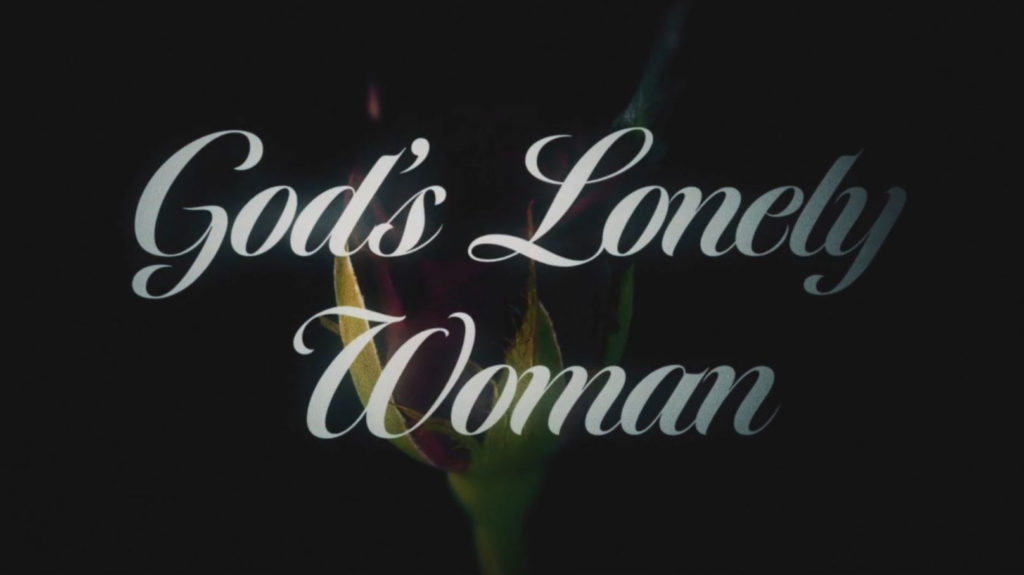
Rob Daniel: Nice to talk to you again, Sam. You said you’re based up in Scotland right now?
Sam Ashurst: Yeah, I’m working with Hex Studios. They distributed Frankenstein’s Creature on DVD and that did really well. They’ve now seen and loved A Little More Flesh, so they’re also distributing that.
Hex CEO Lawrie Brewster asked me if I’d be up for relocating to Scotland to collaborate with them on different things, so it’s all very exciting.
RD: What would be the 25-word pitch for A Little More Flesh and where did the idea come from?
SA: The 25-word pitch… good question! This exceeds twenty-five words but, “a controversial director records an audio commentary for his first film, God’s Lonely Woman, for a boutique Blu-ray release. He mentions that the film was banned in the 1970s and the more he talks the more we find out about him and terrible things come to light…”
We’ve become more aware of the issue of how women are treated in the media because of #MeToo. But, my mum was an actress and model in the 60s and 70s and she told me some horror stories. #MeToo has brought into the light something that’s been there for decades.
I thought it would be interesting to explore how things haven’t really changed. In an extreme way in this film obviously.
RD: How did you go about getting funding for this film and putting it together?
SA: Like Frankenstein’s Creature, it’s another self-funded micro-budget thing. I was able to make Frankenstein’s Creature with a crew on a microbudget because I shot it in a day!
With A Little More Flesh I looked at Frankenstein’s Creature’s budget to see what the most expensive things were. These turned out to be the cinematographer and the editor, who were worth every penny and wonderful collaborators.
But, I couldn’t afford to do a shoot for more than one day with a cinematographer, so I spent a bit of time learning how to shoot and edit. You’d be surprised how easy it is to give yourself a film school using YouTube step-by-step videos.
That’s why it’s a bit of a one-man band in the credits and why it took longer to complete.
I had the idea of doing a film where the narrative is an audio commentary, because one of the hardest things to get right on an indie film is the sound. If I was going to do a film with just me as the crew, I couldn’t hold a camera and a boom microphone at the same time. To get around that I thought, what if the film was based around an audio commentary, something I can record separately in a booth.
People are used to audio commentaries, plus video essays on YouTube, so I thought it would be interesting to combine those things.
RD: How easy was the film to cast?
SA: I had to find the right actress to do it, because it was going to be a challenging shoot, involving a hell of a lot of trust. I’ve known Elf Lyons for ten years, we first met on the stand-up circuit gigging at open-mic nights. She’s an unreal stand-up and I urge everyone to see her show, which is a theatre piece meets stand-up comedy. After I met with Elf, I realised we could move forward. She is astonishing in the film, and I was so excited when she agreed to do it.
Elf produced the film along with me and it was an important part of the trust element that she felt comfortable and safe. Her role as producer involved casting everyone around her, which ensured there was no sense of peer pressure or letting the side down if she needed to tap out at any time.
So, Dane Baptiste who plays Patrick Steeds in the film we both knew from the stand-up circuit. He’s been on Live at the Apollo and had his own BBC3 series Sunny D, which is well worth checking out.
Pretty much everyone who appears in the film is a comedian, even Hazel Townsend. Hazel works as a model and has been on the cover of Vogue, alongside other high profile campaigns. But, she trained at École Philippe Gaulier, the Paris clown school that Sacha Baron Cohen went to, so her physicality is amazing. Rob Kemp also does stand-up and Gabriel Thomson was a child star on My Family.
Everyone was a friend of Elf’s and they got the line we were walking with the film.
RD: God’s Lonely Woman is the film within A Little More Flesh. Did you actually script it and make a film that could be watched independently of A Little More Flesh?
SA: Elf and I had several meetings and created a structure for this very pretentious erotic film. What you see is that structure played out. In terms of the dialogue, the actors improvised it on the day. It was important to both of us the dialogue be real in case any lip readers were in the audience! But, due to the way I cut it there may well be some gibberish exchanges in there.
One of my actors had trouble saying horrible things to Elf, so I gave him permission to describe the plot of his favourite film in a passionate and evil looking way!
But, the majority of the film sort of makes sense if you were to watch it. A bonus feature on the Blu-ray will be certain scenes with the sound up so you can hear the actors’ dialogue. Has to be said, a lot of what they are saying is very funny.
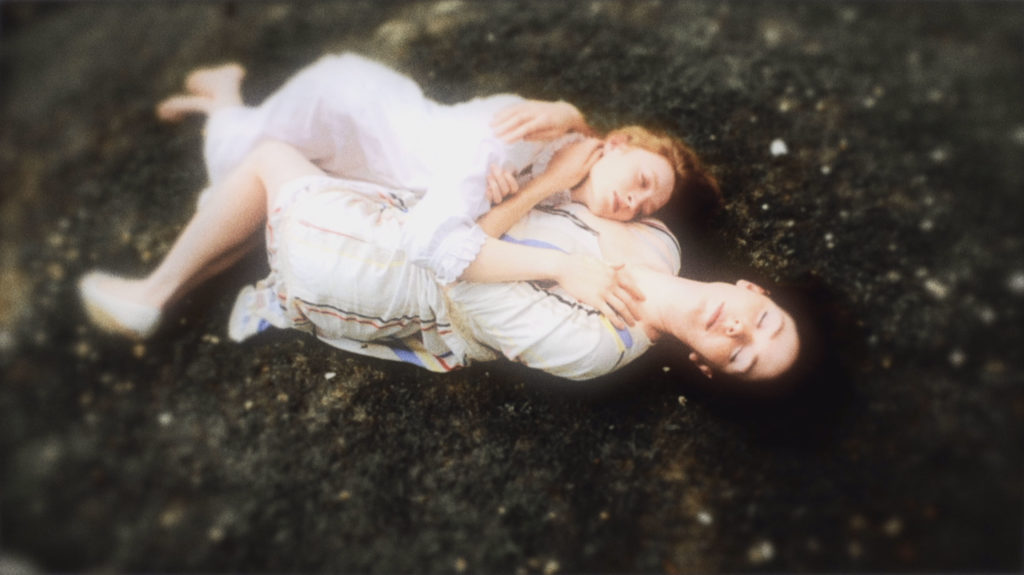
RD: God’s Lonely Woman captures the look of 1970s Euro-horror and reminded me of what Peter Strickland is doing with his movies. Did you show any films to the cast as reference?
SA: Actually, not really. Jean Rollin was one of my inspirations. Although there is crossover with his film Fascination, the Rollin film I actually had in mind was The Iron Rose, that amazing single location movie. Just a couple of people walking around a graveyard, but Rollin makes it dynamic and visually interesting. Plus some Jess Franco movies, but I didn’t talk to the cast about visual style.
I did edit as we went along so everyone would understand what I was envisioning. We’d shoot in the day, plus a couple of evening shoots, then I’d go away to start building the film piece-by-piece. That way I could show the cast what it would look like, and, because it was an improvised film I wanted to make sure we had what we needed for our “silent movie”.
After I assembled twenty minutes of visuals, I recorded an accompanying commentary. That was the best thing I could have done because it clicked for everyone when watching it. They then felt relaxed that I knew what I was doing.
RD: What camera did you shoot on?
SA: (laughs): That is maybe one of the surprising elements of this: I shot it on my iPhone XR, using lenses from a company called Moment. The same lenses Steven Soderbergh shot Unsane on.
I had the idea of shooting the film on my phone before seeing that film but had read he’d shot a movie on his iPhone. I watched it and thought it worked from a form and content point of view; the phone seemed to allow him to be more intimate in shot choices and I was surprised at how good it looked.
That led me to investigating the lenses he used and the practicalities of shooting that way. For anyone interested I mostly used a Moment 18mm wide angle lens and an app called Filmic Pro. That app allows you to control the exposure and focus in a way you can’t using the normal iPhone video app. Then you Bluetooth it to your laptop, edit it and gradually you’ve got a film.
RD: I think it will
be inspirational for readers to see how they can shoot a film using resources
that are reasonably readily available. The film looks good, but the only real
expense was the lens?
SA: Yes, the lens was $150,
which sounds like a lot, but in the context of lenses is nothing. The time you must
put in is in the grading. I did a lot of work in the grade to give the film that
textured 70s feel. Essentially, with enough hard work, time and YouTube videos,
anyone out there who wants to make a film can. You really can teach yourself.
RD: Olly Gibbs provided the striking opening credits for this film as he did for Frankenstein’s Creature. Did you brief him on what you wanted?
SA: Yes, I gave him an idea of what I was after and then he totally over-delivered on that. I love what he’s done here. I was partly inspired by The Age of Innocence. That’s obviously not a 70s-set film, but I felt the idea of a flower blooming in the opening credits fitted the period our film was meant to have been made in.
It was a nightmare making up all the fake names of the cast and crew, having to check on IMdb that no-one had those names in real life.
RD: I thought that would have been fun!
SA: Well, coming up with the actors and character names was fun. There are a couple of references to my friends in there. Not, I must point out, because I wanted to associate them with any of the behaviours in the film. But, Edmund Muncer is named for Mike Muncer of The Evolution of Horror podcast. Patrick Steeds is named for Charlie Steeds, an incredible director with the indie spirit, who goes out with a handful of crew members and makes astonishing films.
And Stanley Durall, the fictitious director of course… well, I won’t give that away, but people can work it out.
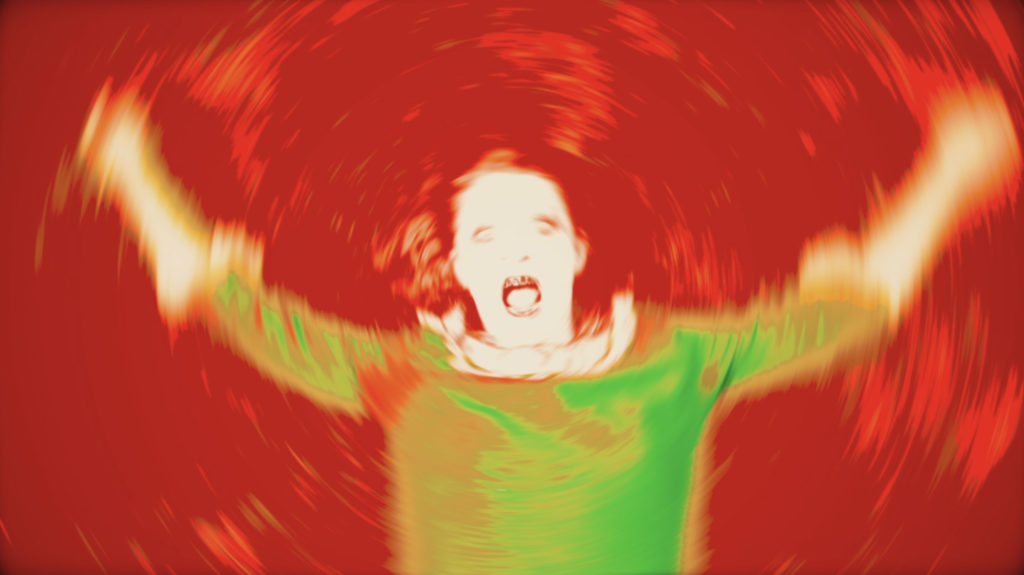
TASTING SESSIONS
RD: What have reactions been to the film?
SA: When I first sent the film out to friends in the industry, one of them said, “Aren’t you worried people are going to think this is you and your opinions?”
I did have a kind young woman get in touch with me after Anton Bitel’s amazing early review went live, saying she’d read it and it was a total joke; she listened to the (Arrow Video) podcast and knew I could never behave like that.
I thanked her for the kind words, but said Anton was reviewing a character I played, not talking about me. So, that potential for confusion is slightly concerning when the film goes out to wider audiences (laughs).
RD: When people see it they’ll know pretty much straightaway you’re playing a monstrous old film director.
SA: Yes, and if that woman had seen the film she’d understand the review was talking about the character.
We had the world premiere on 14th March at the Starburst International Film Festival in Manchester. The guy running the Q&A opened with, “Are you going to apologise for putting people through that?”
I knew he was referring to the film’s extreme final moments, which are pretty overwhelming on a cinema screen. But, because of my slight paranoia, I did apologise and said the views espoused are not mine but those of the monster I’d created.
THEMATIC MEAT
RD: That seems like a good place to move into the audio commentary aspect of the film. Like Frankenstein’s Creature, this is a monologue movie. But, what is interesting here is the counterpoint between sound and image. This makes the film funny and disturbing, often at the same time. Was it difficult to balance the tone of light and darkness?
SA: With Frankenstein’s Creature I was interested in the effect subverting cinematic techniques can have on the audience. There I was trying to create a piece of transcendental trance cinema as described by Paul Schrader in Transcendental Style in Film.
For this one, I wanted to push that further and make the audience never really feel safe. In terms of this film’s jump scares, you never know when they’re coming. I’m a fan of jump scares, but usually you can read the screen and feel when they are going to happen. So there’s the stress of that throughout.
Then there are scenes in the movie that run a long time and the feeling is, “Er, when is this going to end?” The scene of Elf’s character dancing pushes that to an extreme. I wanted her to go on a physical journey over the scene and Elf did it magnificently.
She also carries the audience through there, because some of the darkest and most complex stuff on the audio commentary occurs in that sequence. A lot of that balance comes from Elf’s performance, which is comedic, then extreme in places. You feel so much sympathy for her, particularly as the film goes on.
But, Elf was always in complete control and knew she could stop if anything became too uncomfortable. So, I’m proud we managed to get something intense and sometimes really horrible in a way where people were as comfortable as they possibly could be.
Now, people reading this may be thinking, “Why the fuck would I want to watch a film that makes me so uncomfortable and scared!”
Two reasons: a) the point of horror is to be transgressive, and b) it’s all building to what I hope is a cathartic moment and will provide release to at least 50% of the audience. Some may still be uncomfortable at the end of the film, but I hope everyone gets that catharsis!
RD: The audio commentary in the film reminded me of a stand-up comedy routine. You have set-ups and punchlines, callbacks, and some of the darkest stuff is delivered in either wistful or deadpan tones.
SA: I’ve never actually thought of it in that way, but now you say it that makes total sense. When I did stand-up I never had an hour set, I’d do ten minutes at most. I made it to the final of the Leicester Square Theatre New Comedian of the Year award and a reviewer said, “Ashurst operates under the misapprehension that simply being weird is enough.” Although, that’s a misapprehension I’ve operated under my entire life.
I’d done research on why we laugh and there is a theory that laughter originates from a response of fear and alarm to danger. Obviously, I’ve always loved horror movies and now I make horror movies, but back then I wondered could you transplant the logic of horror to stand-up and make people laugh that way. My character was a psychedelic serial killer who had insane visions. He would do observational comedy based on his very dark experiences. A lot of that depended on deadpan delivery.
A Little More Flesh has dark jokes but isn’t a traditional horror-comedy. I’m not looking down on horror-comedy by saying that, but there’s no getting away from the fact if this film was watched by the wrong audience it could cause extreme offense.
Chris Morris’ Jam was definitely an influence, especially the radio series Blue Jam. If this film were watched by audiences who like that kind of comedy, I think they would get what we’re doing.
RD: The arc of Stanley’s character was impressively realised. Initially it’s possible to feel sympathy for this deluded director talking about his rubbish soft-core porn film in grandiose terms.
SA: Yes, as much as Stanley is a repellent monster, in order to sit with him for an hour and fifteen minutes you must be able to either feel sorry for him or identify with him in some way. There was one version of the script where he was, and excuse my language, an utter cunt throughout and every minute of it was at the extreme end of the scale.
But, I realised no-one would sit through something that pushed things so far. So I had to step back and even create the illusion he had some affection for Isabella in the early stages, to drip feed information and give the story an arc.
RD: A Little More Flesh seems to be a statement on the way filmmakers have got away with abuses in the past because they were viewed as mavericks, but now there is far less tolerance of this behaviour? Would I be right in saying that?
SA: Yeah, you would. I’m a fan of Lars von Trier’s films, but Elf did bring him up as a potential influence because of the way he treated Bjork on Dancer in the Dark. One of the fictitious producers on the film is called Torrance Towns, a Shining reference. And there are others…
My character Stanley lacks all awareness. He has no regrets and even all these years later refuses to acknowledge any wrongdoing. He justifies himself saying things were different back then, but you get the sense he’d act the same way today.
One of the genres of film I love is J-Horror and the idea that you transgress and get punished. I feel we’re in a time now where the people who have transgressed are being rightly punished, the sins of the past are returning for them. But, some of these people are refusing to acknowledge guilt and make reparations. We saw that recently in the Weinstein court case.
The working title of this film was Art and the Artist. It’s a tricky business and I think you have to separate art and the artist. Some people are such extreme examples that it’s impossible to do that. But, I adore Rosemary’s Baby, it might be my favourite horror film, and Lars von Trier’s work is incredible.
What is really dark is that the personality types that committed the horrible acts are the personality types that made those films. It’s hard to disconnect them and it’s a tough one to talk about, because we could lose some of the greatest works. But, there’s still this compromise.
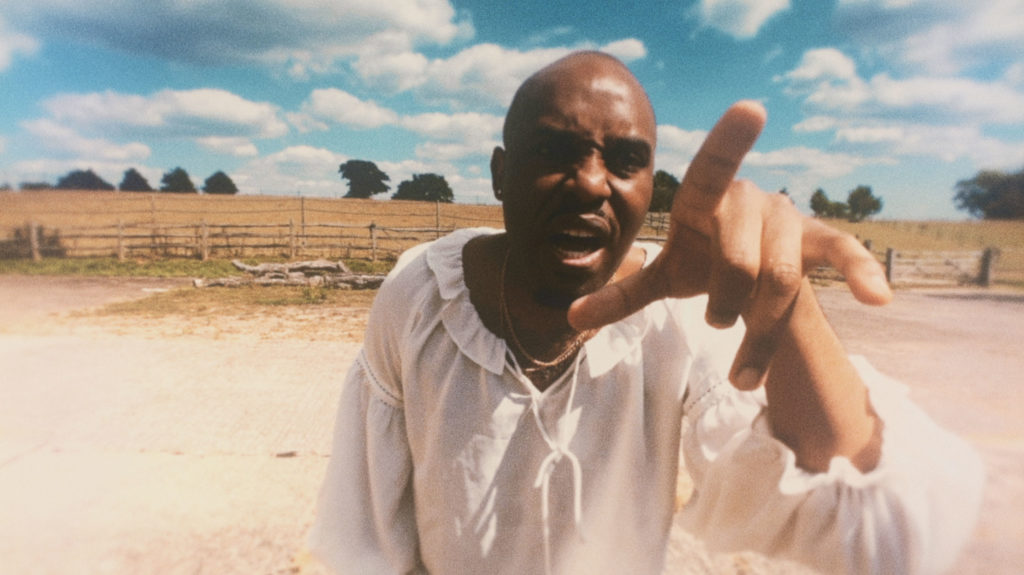
JUST DESSERTS
RD: Special FX whizz Dan Martin provides a climactic set-piece that won’t easily be forgotten.
SA: Dan is a genius at what he does. I was nervous because it’s all well and good having that ending written down on paper. But, as much as the film was improvised, obviously that climax was what I was always leading towards. You’re under pressure to get it right and Dan took so many of those worries away. He was kind enough to come on set for this one because it was such a big effect.
I worked with Roz Gomersall, Dan’s assistant, on Frankenstein’s Creature. On that film she applied the stuff that Dan created on to our actor, James Swanton. I felt safe with her as well, but there’s nothing like having Dan Martin of Lords of Chaos and Color Out of Space and other incredible FX movies on set.
Co-hosting the Arrow Video Podcast with him is one thing, collaborating with him on a film is quite different. But, he was amazing to work with.
RD: His practical effects work is often jaw-dropping and more like magic tricks. You find yourself thinking how is this being achieved?
SA: That’s it. Dan loves magic, I love comedy, we both love horror. I think those three things work in similar ways: you’re leading someone down a path, there is misdirection that then leads to a surprise turn that will provoke a big reaction.
RD: What are release plans for the film?
SA: It’s in contention for quite a big festival in the US, if that festival happens. It’s not until the end of the year, so fingers crossed. I’m grateful that at least one audience has got to see it and they came out happy.
Other audiences will have a chance to see the film. I’ve signed a distribution agreement with Hex, so they’ll put out one of their lovely Blu-rays with as many special features as possible. So we will be getting a wide release at some point.
RD: Last question, what’s next?
SA: I’m currently developing my next project, which will probably be the closest I’ve come to doing a traditional film. But, fear not, it will still be weird. It’s not Needle Drop, which is currently listed on my IMdb page.
Needle Drop is making its own journey and will be on a far bigger budget than anything I’ve done before. I think it is a way off in terms of shooting, and I’ll probably have shot one or two more films before it’s ready to go.
The next thing is called The Church of Wild Animals, scripted by the incredible playwright Lauren Nazri. I’m so excited to be working with her. Unsurprisingly, it’s another dark film and we’re about two drafts away from shooting… when things calm down a bit in the world.
Thanks to Sam Ashurst for making time to speak with us
Click here for Frankenstein’s Creature purchase information
Twitter:
Sam Ashurst
Elf Lyons
Dane Baptiste
Dan Martin
Olly Gibbs
Hex Studios
Rob Daniel
Twitter: rob_a_Daniel
iTunes Podcast: The Movie Robcast
